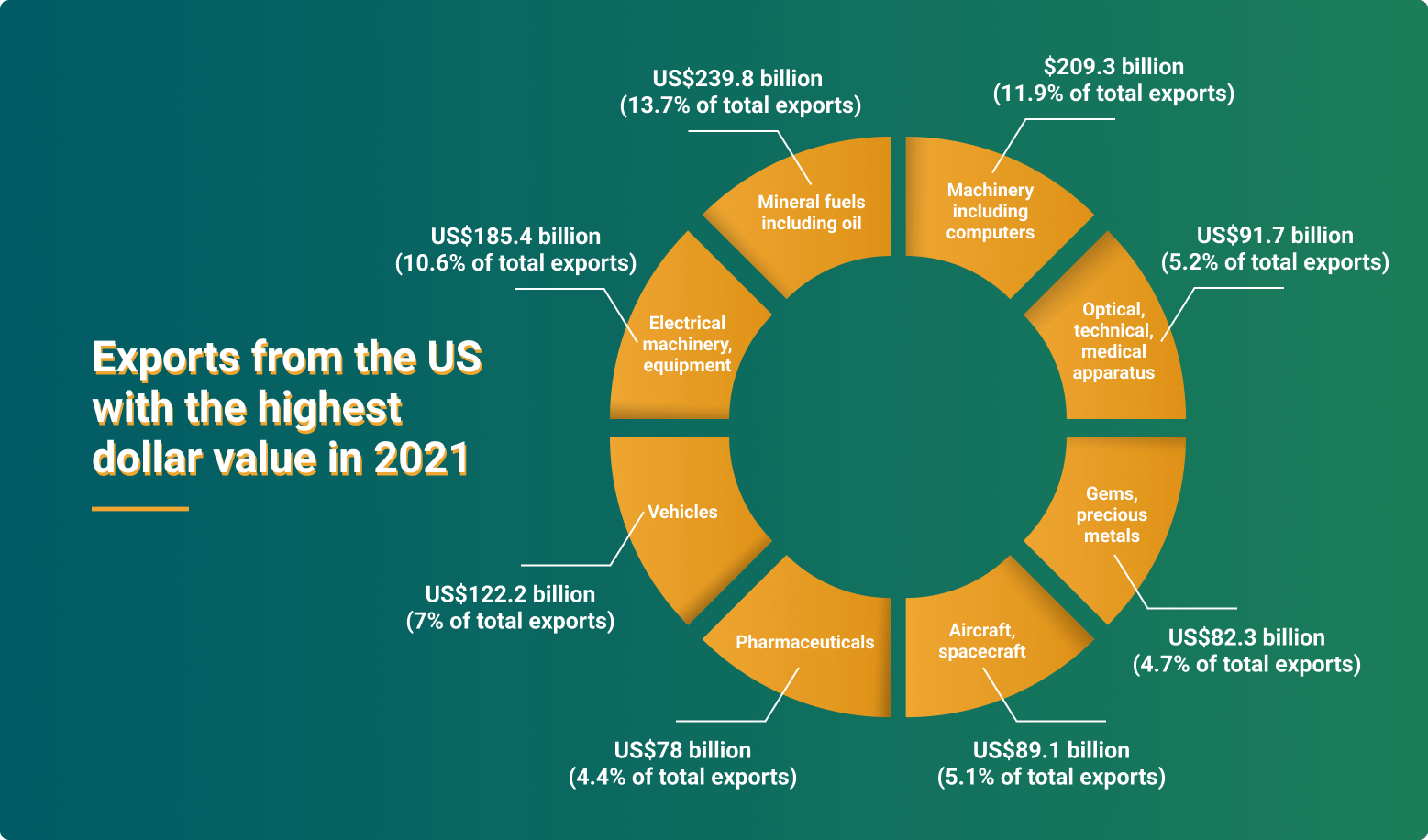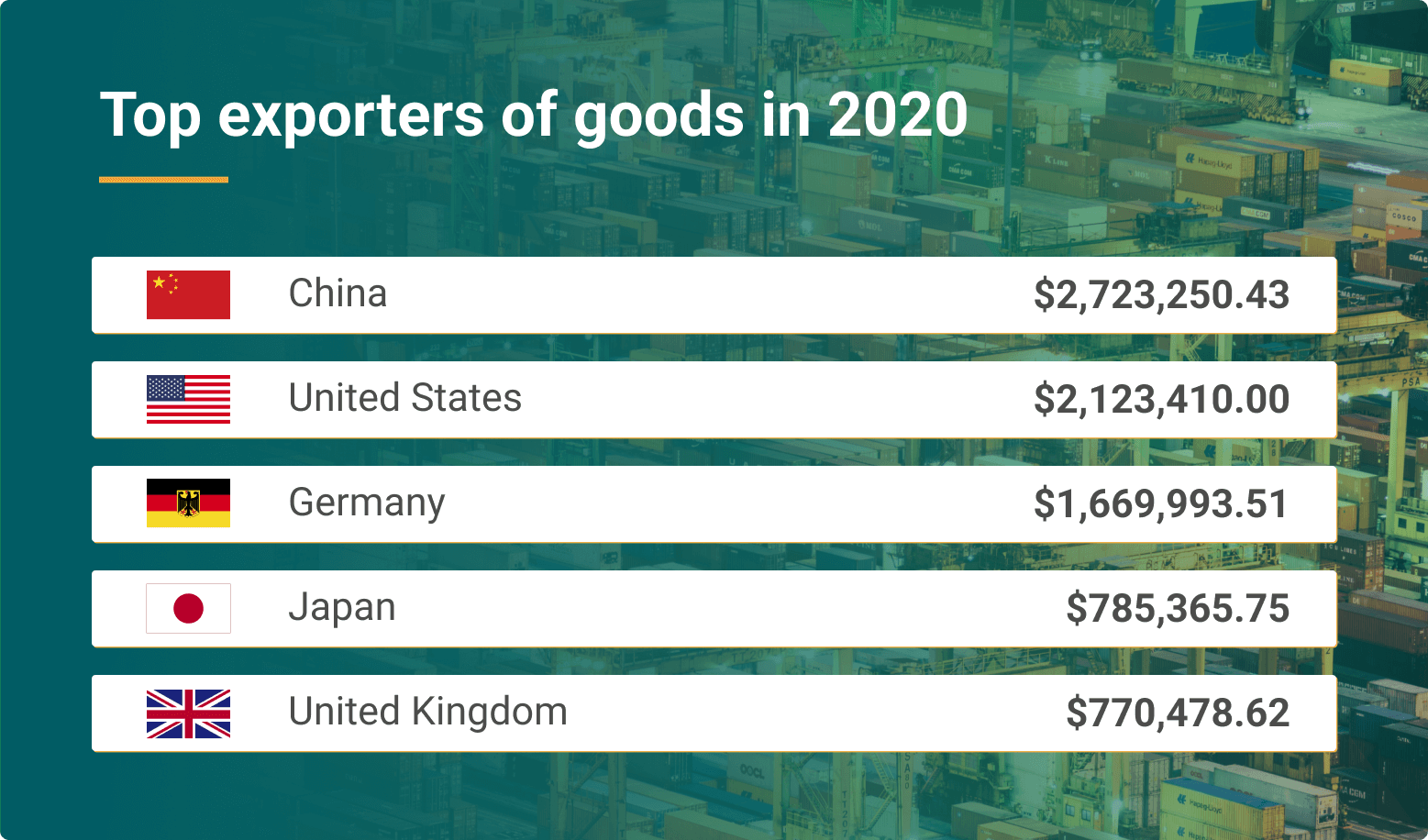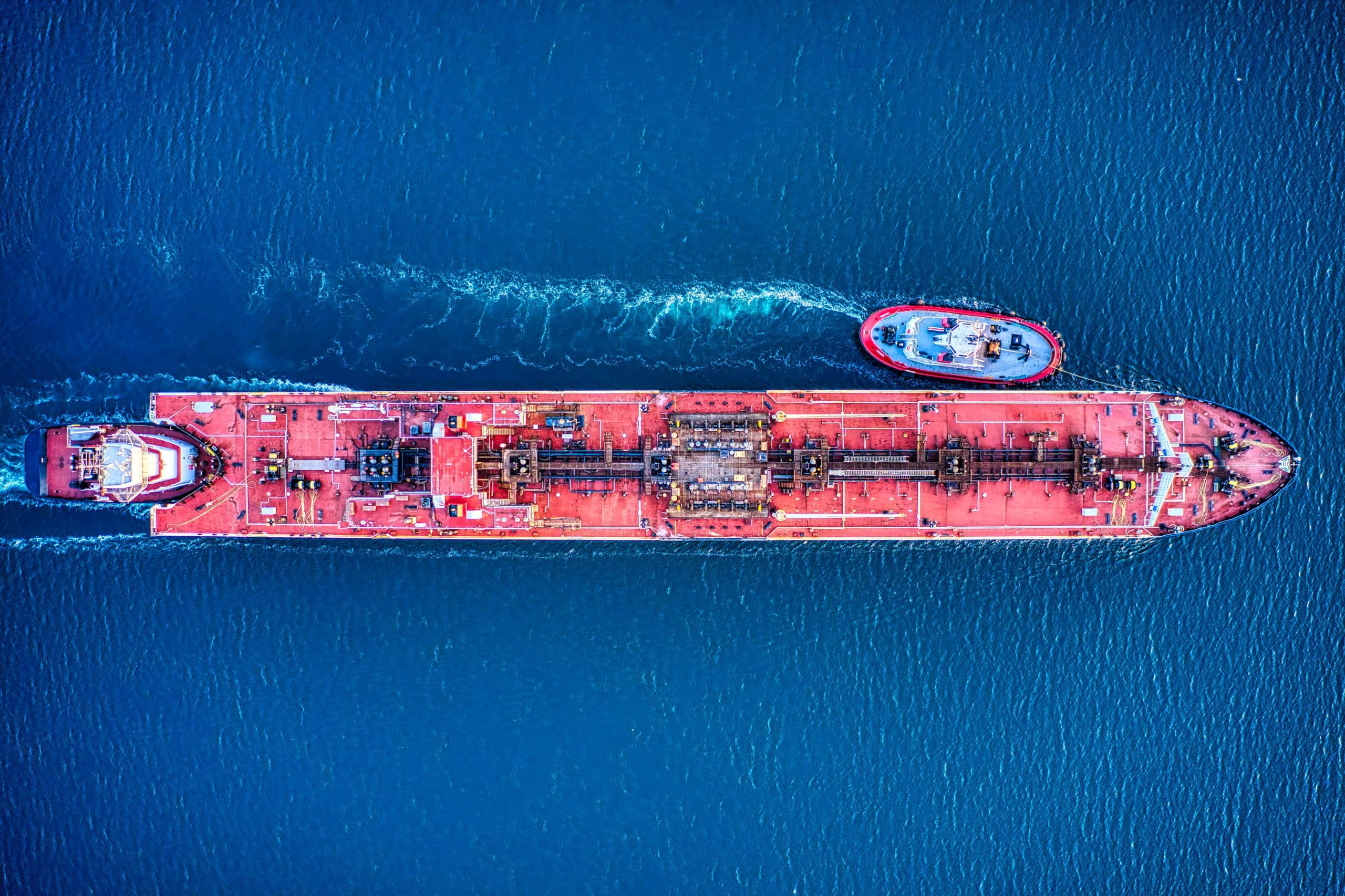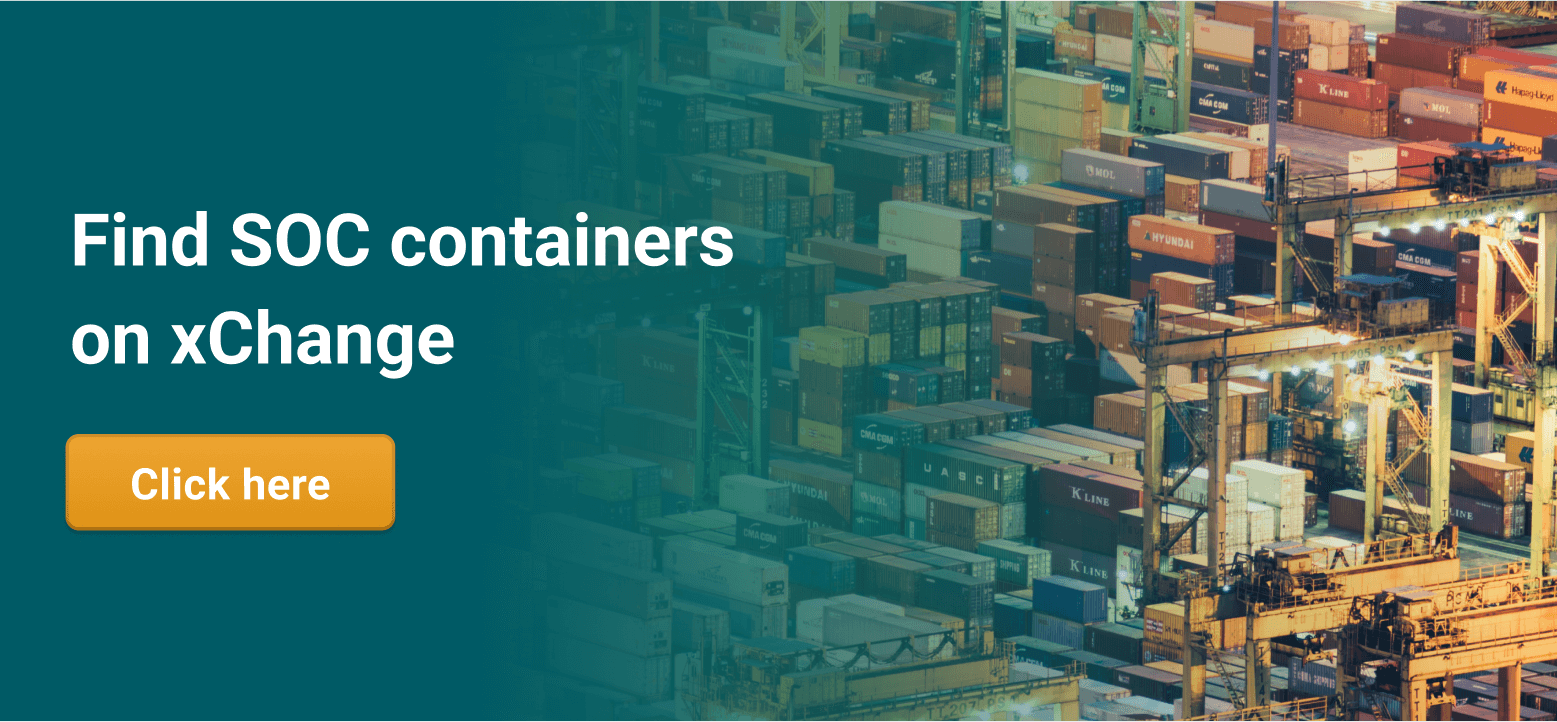Want to export commodities and expand into international markets? Exporting provides ample opportunity for growth and profit. Container xChange makes it easy and convenient to find boxes or increase your container fleet for a temporary surge.
During the Covid-19 pandemic, demand for certain goods nosedived, while other items flew off the shelves. Luxury products like cars, jewelry and make-up were left in stores. Instead, face masks, hand sanitizers and cold and flu remedies saw a surge in popularity, and were suddenly at every checkout counter.
This is a prime example of market fluctuation. Luckily, after a difficult two years, the market has sprung back to life. This being said, there are still some major imbalances in trade flow, which have been difficult to address.
If you’re interested in getting on board and exporting goods in high demand, or filling a gap in the market, we say, smart decision. But wait! You’ll need boxes, or to increase your fleet.
We’re a transparent and neutral marketplace for buying, selling and leasing shipping containers. We’ve got 10,000+ containers available in over 2,500 locations worldwide. And once you’re a member, it’s quick and easy to find the exact boxes you’re looking for, at excellent prices.
Click on the banner below to find top notch containers today. 👇
Export commodities: What are they?
First things first, you may be wondering: what’s an export commodity? Export commodities are raw materials, goods or resources produced in one country, and shipped to other countries to be distributed and sold.
For example, Vietnam is a big producer of rice due to its humid climate. Vietnam exports rice all over the world to countries that don’t have the right conditions to grow it. The same goes for crude oil. It’s produced in areas like the US, Saudi Arabia and China, and is shipped to other countries to be used in vehicles and machinery.
What are import commodities?
Import commodities are goods brought into a country to satisfy a demand or shortage. If you live in a country that can’t grow soy or coffee, you can bet they’re imported from countries that produce them. These days, when you go to a shop, many of the products you buy will be imported from other countries. More and more, our world has become a global village, with goods traveling all over the planet before arriving on our shelves.
Differences between export commodities and import commodities
Here are some of the major differences between export commodities and import commodities:
| Export commodities | Import commodities |
| Sold to other countries | Bought from other countries |
| Sold by a country with an excess supply of a product, raw material or resource | Bought by a country needing a product, raw material or resource |
| Can sometimes include taxes | Usually includes import taxes and charges |
| Brings foreign currency into a country | Takes local currency out of a country |
Now let’s talk about the importance of exporting and importing commodities.
Export and import commodities: Why are they important?
Exporting commodities is important and necessary. Why? It allows countries to foster important trade agreements, and for goods to flow freely around the globe from areas of surplus to areas of scarcity. Without the import/export trade, many areas of the world would have little access to medicine, oil, gas, machinery, grains, coffee and technology.
As the other side of the same coin, importing is just as important, as it allows countries to access important raw materials and resources that cannot be accessed within their borders.
Each country around the world needs to maintain a delicate balance between how much they export, and how much they import. The importing and exporting activity of a country can influence GDP, the exchange rate, the level of inflation, and interest rates. Ideally, as a country, you want to be exporting more than you’re importing. This shows that there’s a higher output from factories, more people are being employed, and that the country is growing economically.
What are the most popular export commodities?
As you know by now, the supply and demand of commodities changes all the time. As of 2021, these were the most exported commodities in the US by dollar value:

Who are the top exporters in the world?
Are you curious about the top exporters worldwide? We’ve curated a list for you. You guessed it, China is still number one.
- China: In 2020, despite the global Covid-19 pandemic, China’s exports saw a record high of almost 2.6 trillion US dollars. China currently exports automatic data processing machines, clothing and accessories, integrated circuits, mobile phones, and textiles.
- The United States: The US is a big exporter of pharmaceuticals, crude oil, industrial machines, petroleum and cars. Canada, Mexico, China and Japan are the main importers of American products.
- Germany: Germany is the largest economy in Europe. The country’s top exports include vehicles, machinery, chemical goods, electronic products and pharmaceuticals.
- Japan: In 2020, Japan was number 3 in the world in terms of GDP, number 4 in total exports, and number 5 in total imports. Today Japan’s top exports include cars, electronic equipment, integrated circuits, car parts and heavy machinery.
- The United Kingdom: The UK currently exports to 160 nations, and is the 5th largest exporter worldwide. The country’s main exports include cars, machinery, crude oil, gold and pharmaceuticals.

Top tips to export commodities
So you want to export commodities? Great! Here are a few things you need to keep in mind.
What commodities do you want to export?
First things first, you should decide what you’d like to export. Is it gold, coffee or grains? Perhaps it’s electronics, circuits or machinery. Find out if your commodity is restricted in certain areas, as well as what kinds of taxes are applied for exporting, if any. You don’t want to be caught off guard and have to fork out loads of cash, when you’re trying to turn a profit.
What is the current demand for your export commodity?
Do your research and find out where your commodity is needed right now. Demand fluctuates on a month-to-month basis depending on factors such as war, politics, resource scarcities and the economic situation. Is your commodity worth exporting at this point in time? Where is the highest demand? Keep these questions in mind.
Let’s look at an example. Ukraine is currently the largest exporter of sunflower oil, responsible for around 46% of sunflower-seed and safflower oil production. The second largest producer is Russia, which exports 23% of the world’s supply. Due to the recent war between Russia and Ukraine, sunflower oil prices have shot up, and there’s less available to export. Now would be a great time to get into exporting sunflower oil.
What commodities do you want to import?
Ask yourself the same questions here. What is it you want to import, and why? Make sure the goods are allowed into your country, and check the import taxes beforehand. These could really set you back if you’re not careful. Import taxes are known to be steep, so you’ll need to weigh these up against how much you can make selling the commodity in your country.
What products or resources are lacking in your country?
When it comes to importing, it’s important to consider what goods, resources or raw materials are lacking in your country. Where is the gap in the market? You could make good money if you find something that’s in high demand, but is currently scarce within your region.
Import/export restrictions
Import/export restrictions are put in place by governments to limit the type and quantity of goods allowed into or out of a country.
With imports, taxes are pretty standard. Import duty is collected by a country’s customs authority. There’s no way of getting around paying these charges when your goods arrive. The value of an item will dictate its import duty. Taxes will vary depending on the goods themselves, and the country you’re importing into.
Generally speaking, the following items can’t be imported or exported:
- Narcotics
- Guns, weapons, explosives and fireworks
- Poison and other toxic substances
- Counterfeit (fake) goods
- Protected items of international heritage
- Unlawful reproductions of any works subject to copyright
- Wildlife products (skulls, skins, fat and meat)
- Wild animals and birds
- Medicines and pharmaceuticals without a license
Want to find out how you can save money on exporting or importing commodities? Keep reading.

Export commodities easily with SOC containers
You’re probably thinking, restrictions and taxes – enough already! But when we talk about shipping goods, there’s also port fees and charges to think about.
Have you heard of demurrage and detention fees? Demurrage is the extra charge paid by the shipper when the allocated free days are over. Free days are the days you’re able to use the container for, without extra costs. Usually, as the shipper, delays are completely beyond your control, and this can lead to serious frustration, not to mention all that money wasted.
Detention is charged outside of a port, if you pick up the container but don’t return it to the carrier in the allotted time. Demurrage is paid to the port, while detention is paid to the container owner. Learn more about demurrage and detention in this separate blog post.
We bet you’re keen to avoid all of these extra charges. But how? SOC (Shipper Owned Containers) are your answer. Using SOCs takes the stress out of shipping, once and for all. No more reluctantly paying fees when things are outside of your control. What’s more, SOCs on xChange charge almost no per diem (per day) fees, so you can move goods in one-way moves without racking up huge bills.
Want to own your own containers so you’re in charge of where they go, and when? This is another great idea. You won’t have to stress about returning them by a certain time, or going over your agreed upon free days. Being a container owner also means no leasing fees. At last, complete freedom and flexibility!
Learn more about SOC containers in this blog post.
Export and import commodities: Manage demand with Container xChange
Are SOCs piquing your interest? We can help you get the perfect container for your shipping needs.
On xChange, we have over 10,000+ containers available in over 2,500 locations worldwide. All of our partners go through a mandatory vetting process, so you can rest easy. They’re reliable, transparent and professional.
Whether you want to lease one-way containers, or buy containers of your own, we’ve got you covered. As a member on xChange, you’ll have access to big names in the industry, including Kuehne + Nagel, Maersk, Seaco Global, Conway and NileDutch, to mention a few. There’s no need to worry – if you’re a smaller player, you can still work with the big names right from the start.
Finding containers on xChange is simple. Once you put in your search requirements, you’ll be able to connect with partners right away to start negotiating a deal. Yes, you can speak directly with the partner, no middle men involved.
You’ll be excited to hear that every aspect of your container logistics process can finally be done on one platform with xChange. No more switching accounts, or forgetting login details. Everything you need is in one place. From searching and negotiating to payment handling and invoicing, we cover it all.
Want to track your exports or imports? xChange’s automated tracking takes your stress away. Simply keep an eye on your boxes from the comfort of your office.
Are you ready to export commodities easily and affordably? Join 1000+ successful container logistics companies. Click below to start your logistics journey today. 👇
What is an export commodity?
An export commodity is an item produced in one country, and shipped to others for sale. Exporting commodities allows a country with a surplus of goods or raw materials to share these with other countries.
What are the top 3 export commodities?
The top 3 export commodities in the US according to their dollar value are mineral oils (including fuel), machinery (including computers), and electrical machinery and equipment.
What are examples of commodities?
Examples of commodities include grains, gold, oil, meat, natural gas, coffee, and tea. Commodities are any basic goods used in commerce that can be traded and exchanged.




